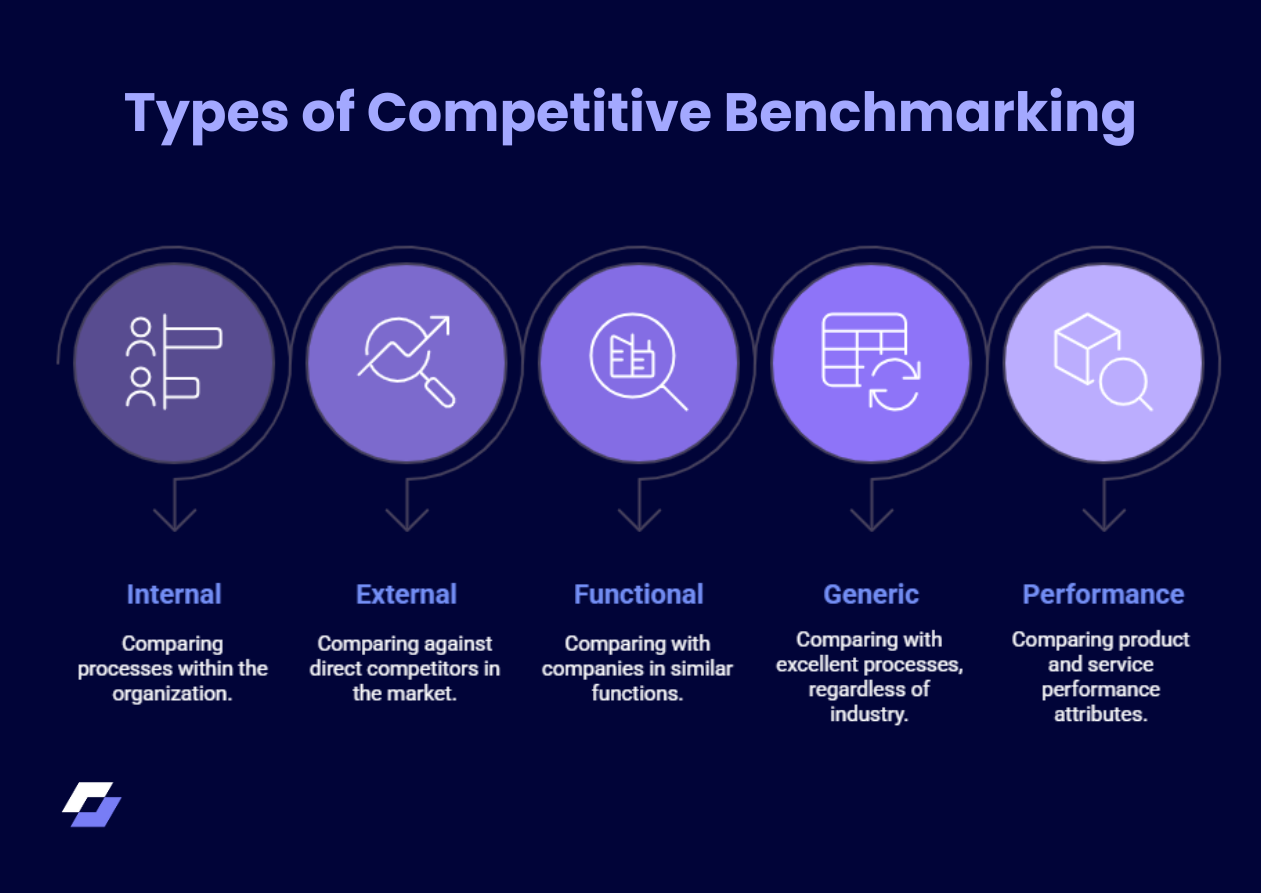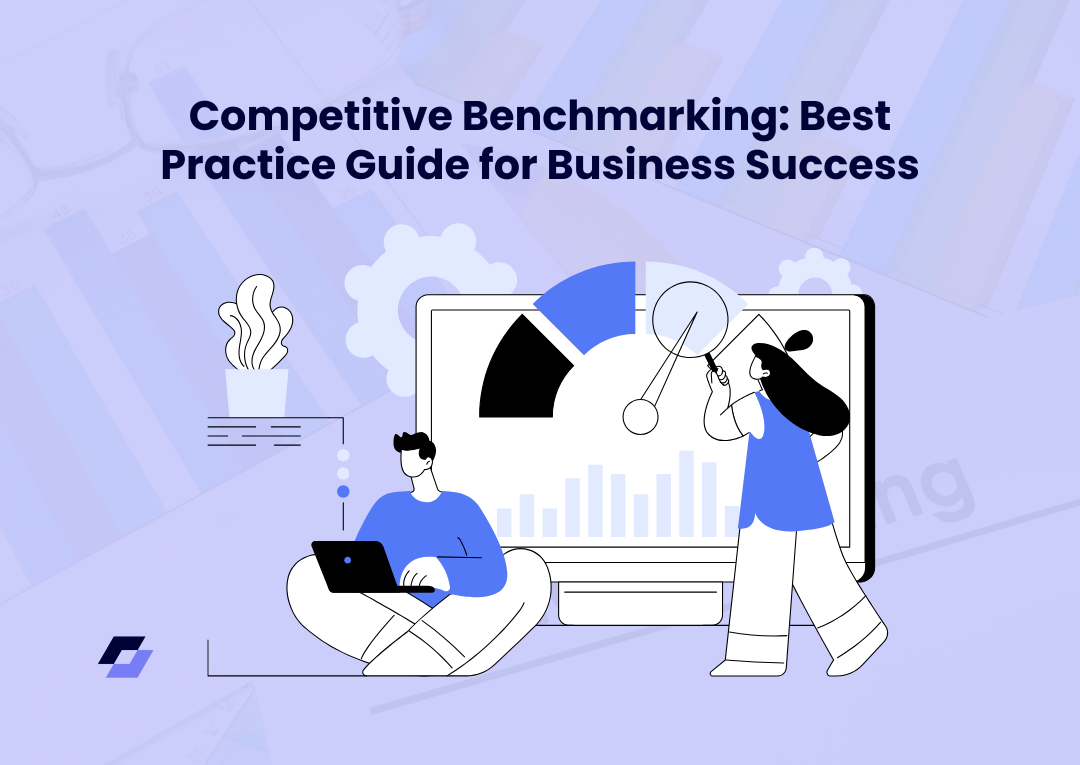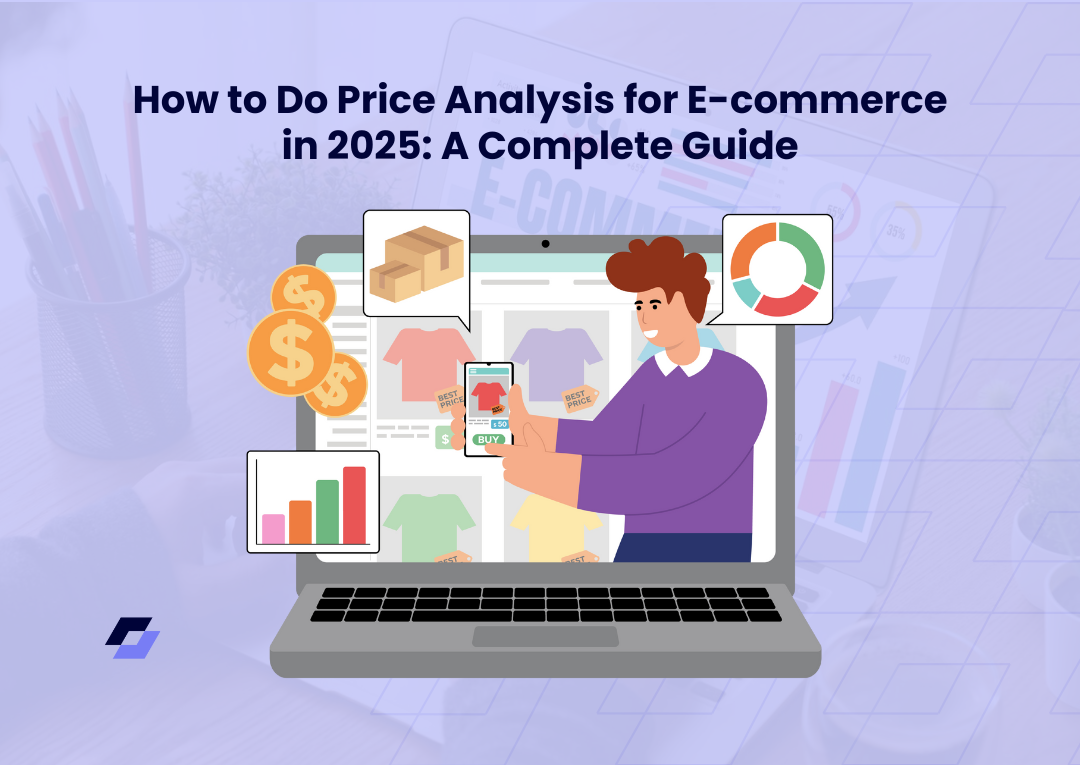© 2025 PriceIntelGuru. All Rights Reserved
In today’s hyper-competitive environment, staying ahead requires more than just intuition—it demands data-driven insights. Competitive benchmarking offers exactly that.
What Is Competitive Benchmarking?
Competitive benchmarking is a strategic process where a business evaluates its performance, practices, and offerings by comparing them against top competitors or recognized industry leaders. The objective is to uncover operational gaps, identify industry best practices, and implement actionable improvements to achieve sustainable competitive advantage.
In the context of today’s dynamic market—particularly in sectors like automotive retail, manufacturing, and aftermarket parts—benchmarking is not just about measuring performance; it’s about setting the foundation for innovation and continuous improvement.
Key Elements of Competitive Benchmarking:
- Performance Comparison: Assessing critical KPIs such as pricing, customer satisfaction, product quality, and operational efficiency against competitors.
- Process Analysis: Reviewing internal workflows versus high-performing industry standards.
- Strategic Insights: Using benchmarking data to inform marketing, pricing, and digital transformation initiatives.
- Continuous Adaptation: Updating benchmarks regularly to align with shifting consumer expectations and evolving market dynamics.
How to Implement Competitive Benchmarking
To effectively use competitive benchmarking, follow these steps:
1. Identify Key Performance Indicators (KPIs): Determine which metrics are crucial for your industry and business goals, such as customer satisfaction, market share, cost efficiency, and product quality.
2. Select Competitor: Choose relevant competitors or industry leaders for benchmarking. This can include direct competitors, aspirational companies, or those recognized for excellence in specific areas.
3. Gather Data: Collect data on competitors’ performance through various sources, such as market research, public reports, customer reviews, and industry analyses.
4. Analyze Performance: Compare your KPIs with those of your competitors. Identify gaps in performance and best practices that could be adopted or adapted for your organization.
5. Identify Best Practices: Look for processes, strategies, or innovations that set competitors apart and can be integrated into your operations.
6. Develop Actionable Insights: Based on your analysis, create a plan to implement changes aimed at improving performance. This could involve process improvements, training, or adopting new technologies.
7. Monitor Progress: Continuously track your KPIs and the competitive landscape to ensure that your strategies are effective and to make adjustments as needed.
8. Iterate: Competitive benchmarking is an ongoing process. Regularly revisit your benchmarks and adapt to changes in the industry or competitive environment.
Types of Competitive Benchmarking:

Here are a few types of competitive benchmarking and their definitions:
1. Internal Benchmarking: This involves comparing processes and performance metrics within different departments or units of the same organization. It helps identify best practices internally.
2. External Benchmarking: This type focuses on comparing performance against direct competitors or industry leaders. It provides insights into competitive positioning and industry standards.
3. Functional Benchmarking: This compares specific functions or processes (like customer service or supply chain management) across different industries. The aim is to learn from best practices outside one’s industry.
4. Generic Benchmarking: This involves comparing overall business processes and performance metrics with organizations in different industries. It seeks to identify innovative practices that can be adapted across sectors.
5. Performance Benchmarking: Focuses specifically on measuring and comparing the performance results (like sales, market share, or customer satisfaction) against competitors to gauge effectiveness.
Competitive Benchmarking in the Automotive Industry
In today’s high-stakes automotive ecosystem, competitive benchmarking plays a pivotal role in driving strategic advantage across OEMs, dealerships, and parts suppliers. With rapid digitalization, electrification, and consumer preference shifts, automotive brands must constantly assess their position relative to industry leaders and agile disruptors.
Here’s how competitive benchmarking is applied across the automotive value chain:
1. Automotive OEMs
- Benchmark Metrics: Cost-per-vehicle, manufacturing cycle time, warranty claim rates, and safety recall frequency.
- Example: An electric vehicle manufacturer might benchmark charging infrastructure efficiency or customer satisfaction scores against Tesla.
2. Automotive Retailers & Dealerships
- Benchmark Metrics: Price competitiveness, service turnaround time, customer experience (CSI), and sales lead conversion rates.
- Example: A dealership chain could benchmark its digital car-buying experience against Carvana or AutoNation to enhance online-to-offline integration.
3. Auto Parts & Aftermarket Suppliers
- Benchmark Metrics: SKU-level pricing intelligence, delivery TAT (turnaround time), online visibility, and product availability rates.
- Example: A spare parts supplier might benchmark pricing and delivery capabilities against RockAuto or AutoZone to gain margin and availability advantages.
Strategic Takeaway: Competitive benchmarking in the automotive sector enables stakeholders to align with evolving standards, improve process efficiency, and tailor offerings to outpace competitors in a dynamic U.S. market.
The Dx3 Matrics:
DX3 metrics refer to a framework for measuring digital transformation efforts. The "DX" stands for Digital Transformation, and the "3" typically represents three core areas or dimensions that organizations should focus on when assessing their digital initiatives. While the specific metrics can vary, they often encompass:
1. Customer Experience: Metrics that evaluate how digital initiatives improve customer satisfaction, engagement, and loyalty.
2. Operational Efficiency: Metrics assessing how digital tools and processes streamline operations, reduce costs, and enhance productivity.
3. Business Model Innovation: Metrics related to new revenue streams, market opportunities, and overall business adaptability stemming from digital transformation.
Benefits of Competitive Benchmarking:
AI-driven pricing can be a powerful tool for retailers to optimize their pricing strategies and improve competitiveness. Here are several ways retailers can effectively utilize AI for pricing:
1. Dynamic Pricing: AI algorithms can analyze real-time data such as demand, competitor pricing, seasonality, and even weather conditions to adjust prices automatically. This allows retailers to maximize revenue by setting optimal prices that reflect market conditions.
2. Competitive Pricing Analysis: AI can continuously monitor competitors' pricing strategies across various channels. Retailers can use this information to adjust their pricing strategies in response to market changes, ensuring they remain competitive.
3. Demand Forecasting: By analyzing historical sales data, AI can predict future demand patterns more accurately. Retailers can use this insight to adjust pricing in anticipation of high or low-demand periods, thereby maximizing sales and minimizing stockouts.
4. Personalized Pricing: AI can analyze customer data and behavior to offer personalized pricing strategies. This could include targeted discounts, bundle offers, or loyalty rewards based on individual preferences and purchasing history.
5. Optimizing Markdowns and Promotions: AI algorithms can optimize markdowns and promotional strategies by predicting the impact of discounts on sales and margins. This helps retailers avoid over-discounting and improve profitability.
6. Assortment Planning: AI can assist in determining the optimal mix of products to offer based on customer preferences and profitability analysis. Retailers can adjust prices dynamically based on the performance of different product assortments.
7. Price Elasticity Analysis: AI can help retailers understand how sensitive customers are to price changes for different products. This insight allows retailers to set prices that maximize revenue without significantly impacting demand.
8. Automated Decision Making: AI-powered pricing systems can make real-time pricing decisions based on predefined rules and algorithms. This reduces the need for manual intervention and ensures consistency in pricing strategies.
9. Predictive Analytics for Inventory Management: By predicting future demand, AI can help retailers manage inventory levels more effectively. This prevents stockouts and overstock situations, which can be costly for retailers.
10. Enhanced Customer Insights: AI can provide deeper insights into customer preferences and behavior, enabling retailers to tailor pricing strategies to different customer segments effectively.
Seize the Competitive Edge with PriceIntelGuru
In the ever-evolving arena of e-commerce, competitive benchmarking is the compass that guides businesses towards strategic success. It's not merely about tracking competitors; it's about unlocking a treasure trove of insights that propel you to the forefront of your industry. PriceIntelGuru stands as a beacon of innovation, illuminating the path to market dominance with its state-of-the-art analytical prowess. Here is how PriceIntelGuru can help your business flourish
- In a world where prices fluctuate with the click of a button, staying updated is not just an advantage—it's a necessity. PriceIntelGuru ensures that you're not just keeping up but setting the pace with real-time pricing data. This continuous stream of information is the lifeblood of strategic decision-making, enabling businesses to react instantaneously to market changes and competitor strategies.
- With PriceIntelGuru's AI-driven predictions, you're not just responding to the present; you're anticipating the future. The platform's advanced algorithms analyze patterns in your competitors' pricing strategies, giving you the foresight to adjust your own prices with precision. This proactive approach ensures that you're always one step ahead, ready to captivate the market with competitive offerings that resonate with consumers.
- PriceIntelGuru's user-friendly dashboard is the command center from which you can steer your business to new heights. By integrating seamlessly with your existing systems, it removes the complexity of manual tracking and analysis. With all your pricing intelligence neatly organized and accessible, you can focus on what truly matters—crafting strategies that not only compete but lead the market.
Conclusion
As we conclude our discussion on competitive benchmarking, it is evident that the journey towards business excellence is perpetual, and competitive benchmarking is the compass that guides companies through the ever-changing terrain of industry standards and consumer expectations. It's a practice that demands vigilance, precision, and a willingness to act on the insights it provides. The insights gained from benchmarking empower companies to make informed decisions, enhance their offerings, and ultimately, achieve a sustainable competitive advantage. In this context, tools like PriceIntelGuru can be invaluable. They provide a detailed and up-to-date view of the competitive landscape, enabling businesses to respond swiftly and effectively to market shifts and competitor moves.
Take the next step: explore, engage, and excel. Book a demo and begin your journey to the forefront of your industry today.


.png)




